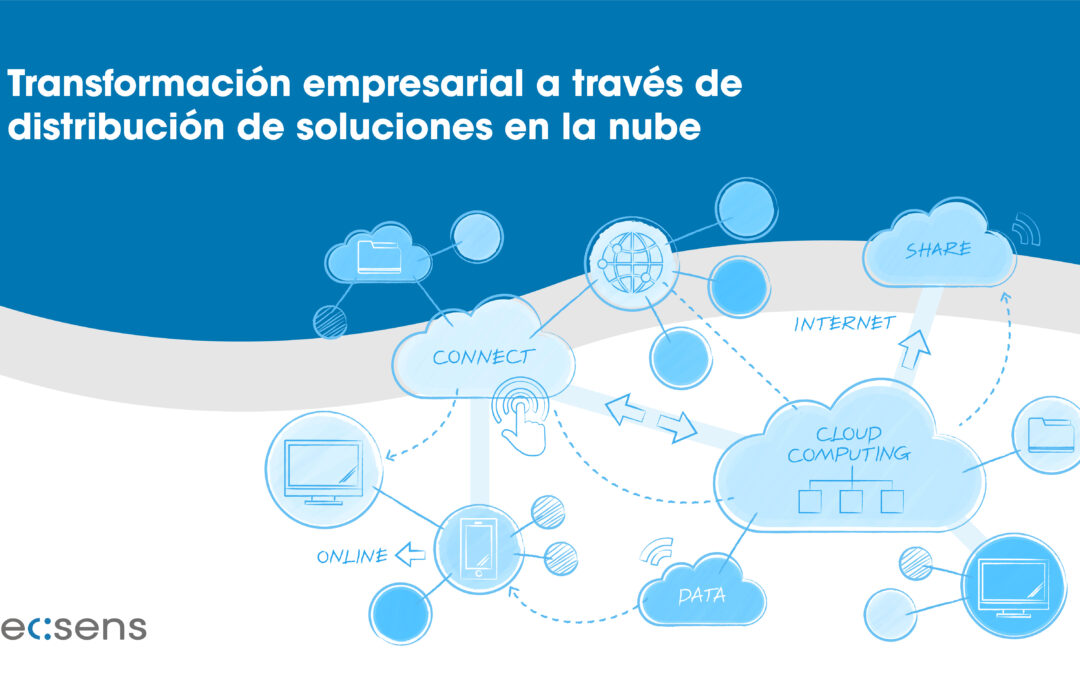The digital revolution has led IT companies to rethink their business strategies, and the delivery of cloud solutions has emerged as a key catalyst in this transformation. This innovative model has fundamentally altered the way IT companies deliver their services, bringing flexibility, efficiency, and scalability to their customers. In this article, we’ll explore how the delivery of cloud solutions has reshaped the very fabric of the business of many IT companies. Business transformation through the delivery of cloud solutions, a new paradigm for IT companies.
Keys to business transformation through cloud solution delivery
Decentralization and agility
Prior to the cloud era, IT companies operated primarily on a model focused on on-premises hardware and software. Customers were reliant on the acquisition of expensive equipment and software licenses, which created significant challenges in terms of budget and maintenance. The advent of the cloud has decentralized this approach, allowing businesses to access computing services and resources over the internet.
This shift has democratized technology, allowing companies of all sizes to take advantage of advanced solutions without making large upfront investments. Agility has become the mantra, as IT companies can quickly deploy and adapt cloud solutions to meet changing market demands.
Scalability and operational efficiency
Scalability is another crucial aspect that has redefined the business model of IT companies. The cloud offers the ability to expand or shrink computing resources as needed, providing unprecedented flexibility. Not only does this optimize costs, as companies pay only for the resources they use, but it also allows for an agile response to peaks in demand.
In addition, operational efficiency has improved dramatically. IT companies are no longer limited by the capacity of their on-premises servers; Instead, they can take advantage of the global infrastructure of cloud service providers. This reduces downtime, improves deployment speed, and optimizes resource management, allowing businesses to focus on innovation and development rather than routine operational tasks.
Global Collaboration and Universal Access
The distribution of cloud solutions has facilitated global collaboration. Geographically distributed teams can access and share information instantly, speeding up development processes and improving collaboration efficiency. The cloud has also paved the way for the adoption of flexible work models, such as remote work, giving IT companies the ability to attract and retain global talent.
In addition, the cloud has democratized access to advanced technologies. IT companies are no longer limited by geographic or financial barriers to accessing cutting-edge solutions. This has leveled the playing field, allowing small and medium-sized businesses to compete on a level playing field with large corporations.
Emerging Challenges and Opportunities
While the distribution of cloud solutions has brought with it countless benefits, it has also posed new challenges. Data security, cost management, and vendor lock-in are critical aspects that IT companies must proactively address.
In conclusion, the delivery of cloud solutions has revolutionized the business model of IT companies, enabling unprecedented agility, efficient scalability, and global collaboration. Those companies that embrace this shift and address its emerging challenges will be better positioned to thrive in the digital age. This new paradigm not only transforms the way IT companies operate, but also redefines the very essence of innovation and competitiveness in today’s economy.




